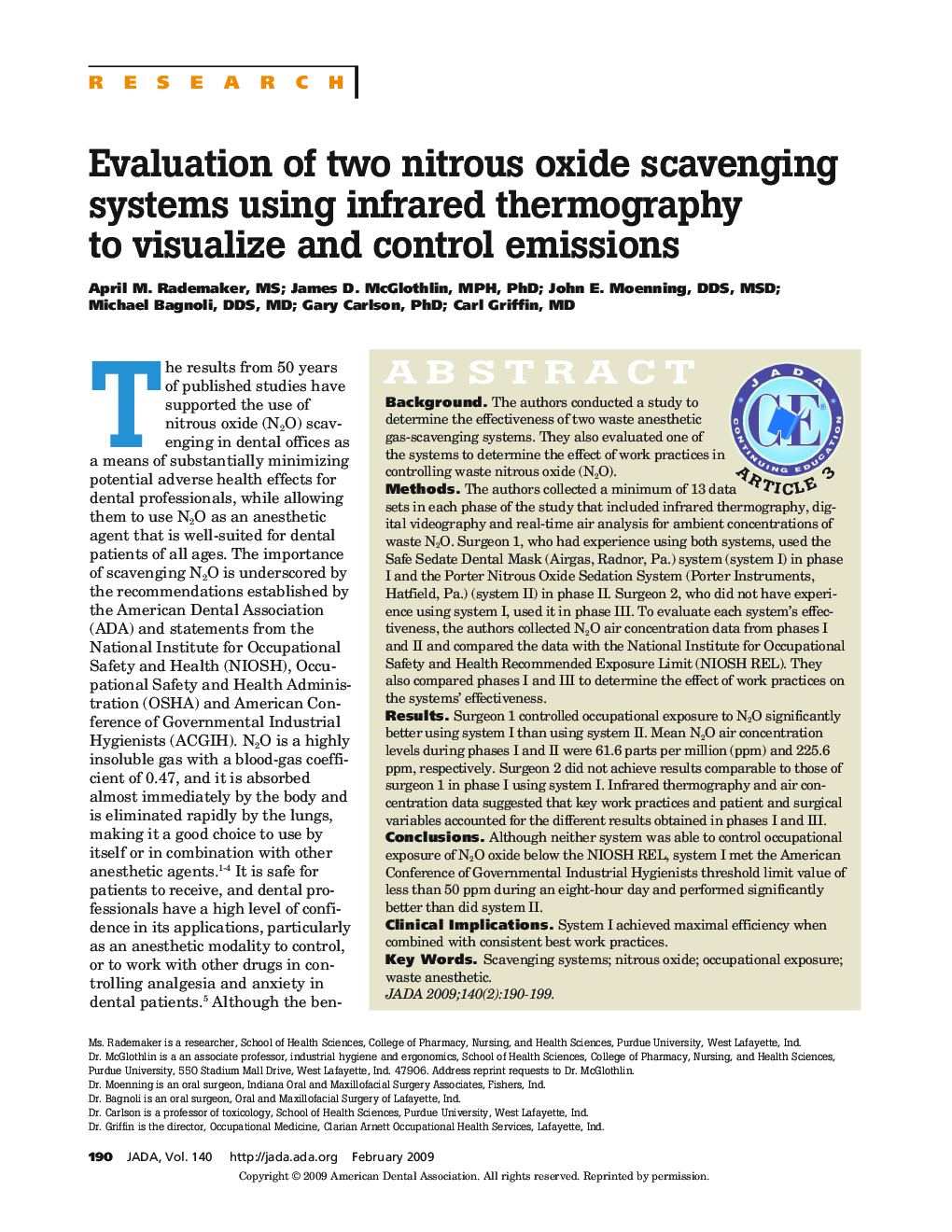| Article ID | Journal | Published Year | Pages | File Type |
|---|---|---|---|---|
| 3139979 | The Journal of the American Dental Association | 2009 | 10 Pages |
ABSTRACT BackgroundThe authors conducted a study to determine the effectiveness of two waste anesthetic gas-scavenging systems. They also evaluated one of the systems to determine the effect of work practices in controlling waste nitrous oxide (N2O).MethodsThe authors collected a minimum of 13 data sets in each phase of the study that included infrared thermography, digital videography and real-time air analysis for ambient concentrations of waste N2O. Surgeon 1, who had experience using both systems, used the Safe Sedate Dental Mask (Airgas, Radnor, Pa.) system (system I) in phase I and the Porter Nitrous Oxide Sedation System (Porter Instruments, Hatfield, Pa.) (system II) in phase II. Surgeon 2, who did not have experience using system I, used it in phase III. To evaluate each system's effectiveness, the authors collected N2O air concentration data from phases I and II and compared the data with the National Institute for Occupational Safety and Health Recommended Exposure Limit (NIOSH REL). They also compared phases I and III to determine the effect of work practices on the systems' effectiveness.ResultsSurgeon 1 controlled occupational exposure to N2O significantly better using system I than using system II. Mean N2O air concentration levels during phases I and II were 61.6 parts per million (ppm) and 225.6 ppm, respectively. Surgeon 2 did not achieve results comparable to those of surgeon 1 in phase I using system I. Infrared thermography and air concentration data suggested that key work practices and patient and surgical variables accounted for the different results obtained in phases I and III.ConclusionsAlthough neither system was able to control occupational exposure of N2O oxide below the NIOSH REL, system I met the American Conference of Governmental Industrial Hygienists threshold limit value of less than 50 ppm during an eight-hour day and performed significantly better than did system II.Clinical ImplicationsSystem I achieved maximal efficiency when combined with consistent best work practices.
